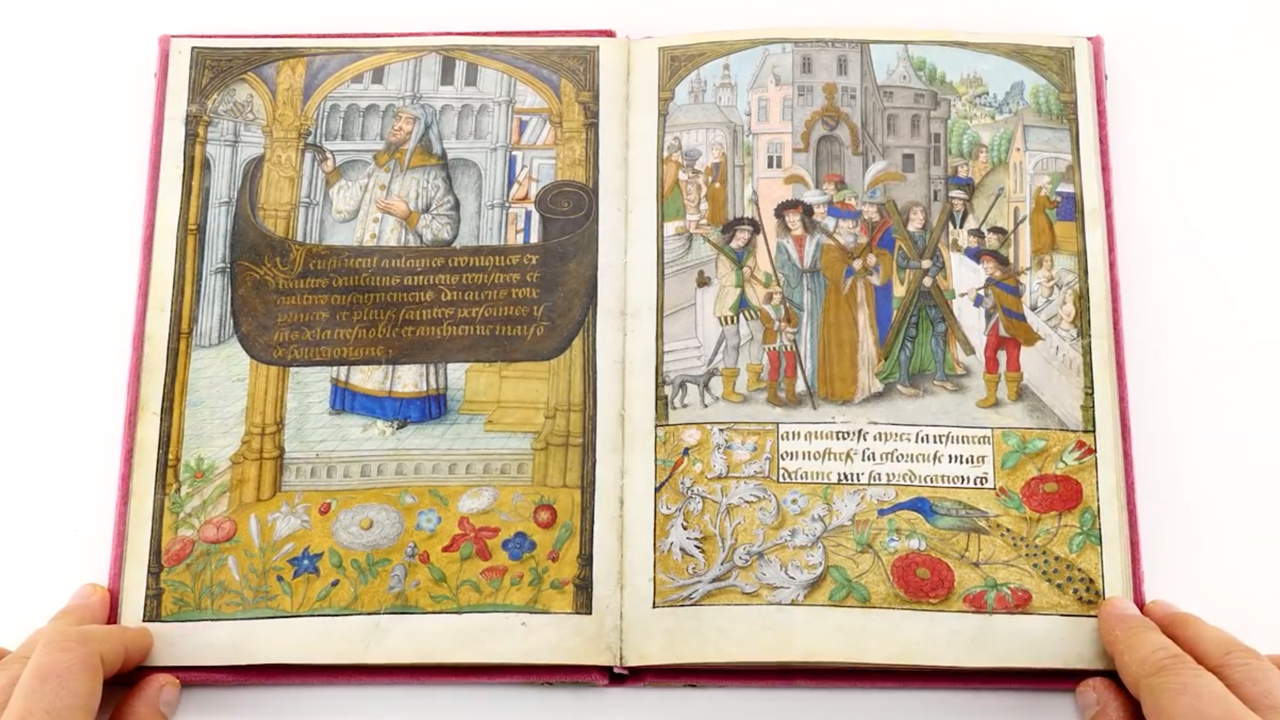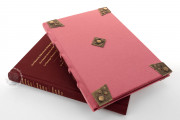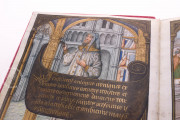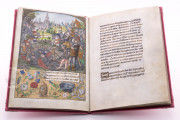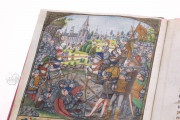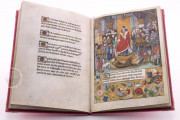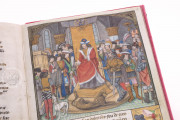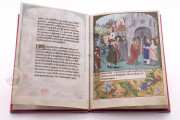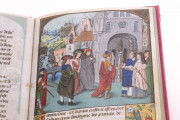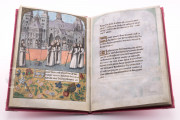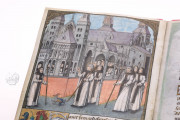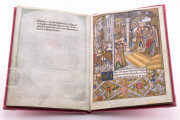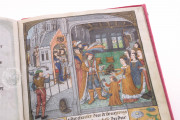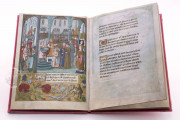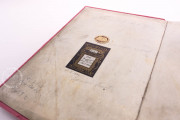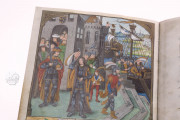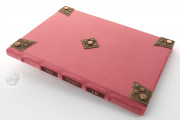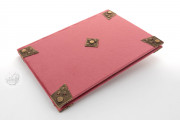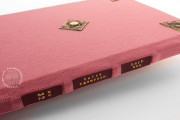An unusual book, the Flemish Chronicle of Philip the Fair records the descent of its namesake through the dukes of Burgundy. The Master of the Trivial Heads illuminated the manuscript around 1485 in Bruges. Only fifteen folios, eleven of its thirty pages feature large, detailed miniatures of historical dukes with the beginning of a descriptive text in French beneath. The opening miniature is an author portrait of a prophet-like man in a church setting with shelves of books in the background (fol. 1v). Although the figure's identity is unknown, the image conveys that history and the Church combined lend their authority to the text that follows.
Created for a young Philip the Fair (1478-1506), the series of pictured ancestors begins with Stephen of Burgundy, a legendary king of Burgundy, and ends with Philip's father, future Holy Roman Emperor Maximilian I. Also included are two miniatures depicting battles and a scene of Saint Bernard of Clairvaux leading a procession (fol. 9v). The book illuminates both the fanciful and factual history of the Duchy of Burgundy in vibrant colors and rich detail.
From Legendary Origins to European Dynasty
The slim volume serves as a family picture album for the young Philip, son of Maximilian and Mary of Burgundy, the only child and heir of Charles the Bold, Duke of Burgundy. The earliest entries reach back to the legendary first-century origins of the kingdom of Burgundy and follow the patrilineal descent through saints and heroes.
Each image is a whimsical delight of a multitude of figures in ornate costumes surrounded by fantastical landscapes and detailed cityscapes. Gold glitters from crowns and haloes. Below each picture is a golden panel filled with flowers and amusing vignettes of humans and animals, which surround three lines of text. This layout echoes that of books of hours and presents the family, with its great patriarchs and saints, as worthy of their heir's devotion.
A Book Fit for a Young Duke
Philip the Fair inherited the Duchy of Burgundy through his mother, Mary. Sadly, Mary died in 1482 after an equestrian accident leaving her son, not yet four years old, to inherit the title. This book was begun only a few years later. Its simple vernacular text is written in the then-fashionable French Bâtard script, also known as "Burgundian letters." That text and the book's enchanting pictures served to educate the young boy about who he was and the importance of his position.
From the Lowlands to London
The book likely remained in the possession of the Duchy of Burgundy until the nineteenth century, when it entered the library of the book collector Ambroise Firmin-Didot (1790-1876). His bookplate is affixed inside the manuscript, which was listed in the 1878 catalog of his collection. It was acquired in 1898 by the collector Henry Yates Thompson (1838-1928). At the death of Thompson's wife in 1941, it was bequeathed to the British Museum. The manuscript holdings of the British Museum library were transferred to the British Library upon its establishment in 1973.
We have 1 facsimile edition of the manuscript "Flemish Chronicle of Philip the Fair": Die Flämische Bilderchronik Philipps des Schönen facsimile edition, published by Quaternio Verlag Luzern, 2015
Request Info / Price
